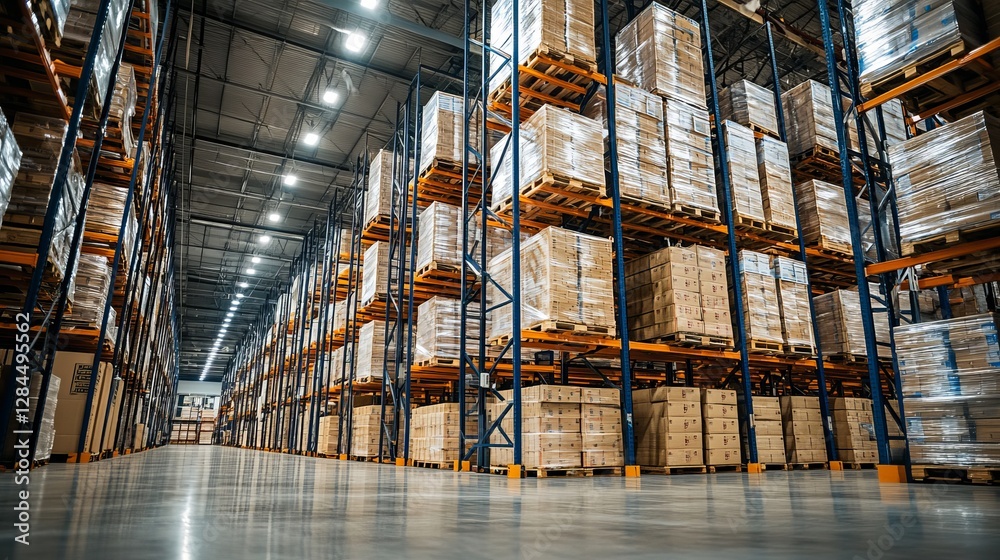
Part 1: Is Your Supply Chain Really Resilient, or Just Stocked Up?
Stockpiling isn’t a strategy. Discover what real resilience looks like and how to build it.
When I sat down to write about supply chain resilience, I quickly realized there was simply too much to unpack in a single post. So, I dedicated two focused entries to this critical topic: real supply chain resilience and how companies can build it.
This first post takes a hard look at the false sense of security created by stockpiling and explores what true resilience means. In Part 2, I’ll share the investments that matter most from AI-powered planning to more innovative ways to sense and respond to disruption.
The word resilience shows up in nearly every supply chain conversation today. Leaders say they’ve “built resilience” by expanding safety stock, locking in capacity, or doubling up on raw materials. And while those may be helpful to stopgaps, they’re not the solution.
Let’s get honest: if your strategy for resilience is to stockpile, you’re not resilient, you’re just hoping you won’t run out.
It’s a reactive move, not a proactive strategy. And companies relying on it are kidding themselves.
The Illusion of Resilience
Yes, adding buffer inventory might soften the blow when things go wrong. But it’s also expensive, inefficient, and misleading.
Carrying excess stock ties up capital, increases the risk of obsolescence, and adds cost across the board from warehousing to insurance to write-offs. More importantly, it creates a false sense of control.
You may feel ready for disruption. But what happens when the next crisis isn’t a demand spike, but a supplier shutdown, a regulatory change, or a global logistics mess? You can’t stock your way out of every problem.
Resilience isn’t about padding. It’s about pivoting.

What Real Supply Chain Resilience Looks Like
In my 25+ years at Dell, I lived through everything from component shortages to natural disasters to global logistics disruptions. If there’s one lesson that stuck with me, it’s this: true resilience is about adaptability, not abundance.
Resilience means being ready for what you didn’t forecast at all. It’s about visibility, agility, and orchestration. Without those, you’re simply reacting slowly and expensively.
1. Visibility
You can’t react to what you can’t see. Real-time, end-to-end visibility across your supply chain, suppliers’ supply chains, and even downstream demand shifts is the foundation.
Resilient companies monitor everything: lead time variability, capacity constraints, transportation bottlenecks, and external risk signals like weather events, labor disputes, and political instability.

2. Agility
Plans based on a single deterministic forecast are fragile. Resilient organizations build flexibility into their DNA. That means evaluating multiple potential futures, running scenarios, and preparing to pivot when something unexpected occurs.
Rick McDonald, fellow Executive Advisory Board member at ketteQ and former CSCO at The Clorox Company, put it well in a recent Q&A blog:
“Resiliency is a lot about making insurance plans… Agility is what you do once that event has occurred. And you need both of those things. I used to think resiliency was kind of the key thing. Agility is… the key to successfully moving through disruptions.”
He also quoted Tom Goldsby from the Haslam School of Business, who said:
“Being resilient is good. Being agile is better.”
I agree. Planning for every possibility and reacting in real time are no longer “nice-to-haves”—they’re core competencies for supply chain leaders.
3. Orchestration
You can’t be agile if your organization is siloed. Resilience depends on functional alignment, where sales, operations, finance, and supply chain all work from the same playbook.
Too often, disruptions are made worse by internal misalignment. Sales doesn’t know what supply is doing. Finance is working off outdated assumptions. Inventory strategies conflict with service goals. These disconnects slow everything down.
Orchestration eliminates those friction points. It creates a connected environment where every team can respond in sync—because they planned in sync.

What Comes Next
The next disruption isn’t a matter of if, it’s when. And if your idea of resilience ends at the warehouse door, you’re setting yourself up for trouble.
Real resilience isn’t a line item on your inventory ledger. It’s a way of operating.
In Part 2, I’ll share where companies should invest to become truly resilient—from AI and demand sensing to more innovative planning systems and technologies that enable speed, visibility, and adaptability.
Check out Rick McDonald’s blog, Operating at the Speed of the Consumer: A Q&A with Rick McDonald, part of ketteQ’s Supply Chain Rewired Video and Blog Series.





